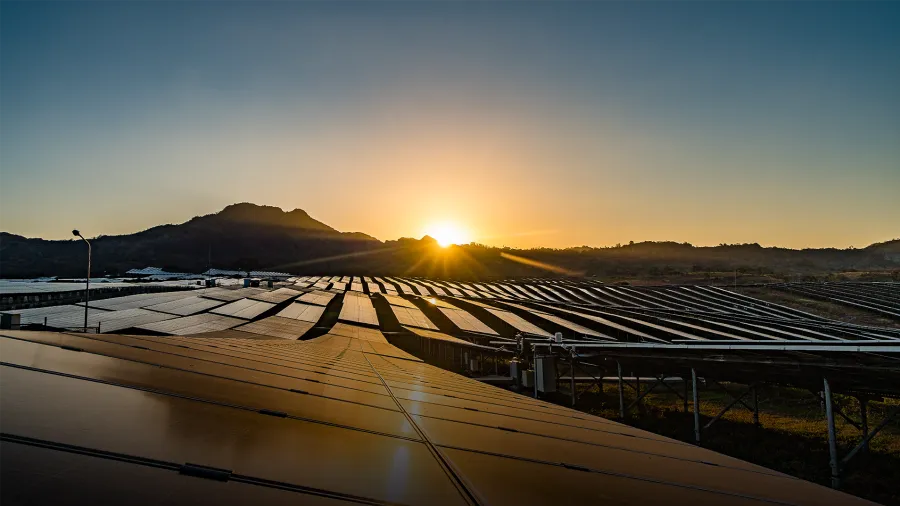
Private firms eclipse the growth of the Philippines' solar power industry
Solar Philippines flagged the lack of foresight amongst businesses to meet high demand.
With only around 1,370 megawatts (MW) of installed solar capacity, the Philippines still has a long way to go before meeting its 20-gigawatt target by 2030. This is even as the government has provided enough support to enable the industry, leaving the fault to the private sector for having a supply that falls short of meeting high demand.
Solar Philippines CEO and Founder Leandro Leviste told Asian Power what holds the development of solar power in the country back lies not in the hand of the government, but amongst businesses that failed to see the demand growth potential.

“The limiting factor is that the private sector has lacked the forward-thinking to prepare solar projects for the time when the solar projects are already needed now. And that's where our company comes in,” Leviste said.
Solar Philippines was founded in 2013, at a time when the Philippines only had 4MW of installed solar power. It has since added some 400MW installed solar capacity, either in operation or under construction. Solar Philippines completed its first utility-scale project in 2016 with a capacity of 63MW, after the Department of Energy announced its feed-in tariff (FiT) scheme. The company then persisted in developing more projects post-FiT, entering into power supply agreements with major distribution electric companies, such as Meralco. This allowed Solar Philippines to reduce the price of solar to 2.99 centavos per kilowatt-hour from around 9.68 centavos initially.
“That resulted in even lower prices for solar, which we think paved the way for a lot more large-scale solar developments up to where we are now, where, hopefully, it can be seen that the [seeds] that we have been planting over the years are now bearing fruit,” Leviste said.
Tell us more about Solar Philippines, its subsidiary, Solar Philippines Nueva Ecija Corporation Corp. (SPNEC), and the share-swap agreement between the two.
The defining characteristic of our company is that we're very entrepreneurial and responsive to market conditions. We did the first IPO of a pure-play solar company in the Philippines in December 2021, and wanted to see how the market would respond. I think it showed that there was a lot of demand for a pure-play solar company in the Philippines, and saw that as good timing to fold in the rest of our developments to also respond to what many people were asking for, which was the listing of the rest of our developments, all in one company. So now our investors have also shown that it's an even better proposition that you have some operating assets, some contracted assets, and the rest of the pipeline. We hope that stock reception will continue to be strong as we will partner with our public shareholders to expand the solar projects of our company and the solar power industry of the Philippines at large.
What projects can we expect from Solar Philippines/SPNEC this year and in the following years?
The proceeds of our IPO are financing the Nueva Ecija solar farm, which we have positioned as the largest solar project in Southeast Asia because it has two phases. The second phase should be also constructed next year, for a total of 500MW. In the same general area, we are acquiring expansion land, so that the total development can supply even 4,000MW, which is possible because of the availability of land that is unproductive in the area, as well as its proximity to the demand of Metro Manila. It's all in the general area of Nueva Ecija. But it includes some in the neighboring province of Bulacan because the project will eventually connect to a substation in Bulacan, which is the drawdown point for the demand of Metro Manila.
So that is really the value proposition and the business model of our company, which is to go to the place where you can build very large scale solar projects, if only you have a few years of a head start to consolidate the land, the permits, and the right of way for the transmission.
You recently signed a PPA for a 50MW solar farm in Indonesia. What other markets will you tap into?
It is not significant in scale compared to our other projects. But it is, we hope, reflective of number one, our company's ability to develop projects, even outside of the Philippines. So, if we can do it in Indonesia, or more hopefully we can do it in the Philippines, and there are so many opportunities. I think that Indonesia is the second most attractive market in the region for our business model, which is to focus on the places where there is a huge future potential, very limited land, and an underdeveloped solar industry. Because where there's already a lot of solar, we think there is little value to be added. But where there is a challenging market, and where land is scarce in islands or densely populated areas of Southeast Asia, that's where we see there is value to be created in solar development. But of course, as our name suggests, we are focused on solar in the Philippines.
We actually have [also] constructed a mini-grid project in Shan State, Myanmar. But our bread and butter is solar in the Philippines. We do the other things just to learn more about other markets in hopes that when we have saturated the market in the Philippines, we may have new markets to enter. But the principle is for as long as the highest value that we can add is right here in our backyard, then we should devote as much as possible of our resources to saturating our backyard.
How would you assess the Philippines compared to other Southeast Asian countries in terms of its clean energy transition, particularly in terms of solar power?
In terms of demand, the Philippines should have at least the highest percentage of potential solar, because it has the highest price of electricity in Southeast Asia. In terms of supply, it should have the most difficult environment because of its density in population and general difficulty in repairing project sites, which, of course, both make it a very attractive market for those that are able to get things done in the Philippines. And it's for that reason why, yes, we are focused on solar in the Philippines.
In what ways can the government, as well as energy firms like Solar Philippines, help the country is shifting to renewables?
In other countries, the question of what the government can do is more appropriate, because, without government intervention, people will not go solar, because it's not commercially viable. In the Philippines, government intervention is not the limiting factor. Without government intervention, it already makes economic sense. The limiting factor is that the private sector has lacked the forward-thinking to prepare solar projects for the time when the solar projects are already needed now. And that's where our company comes in. Because we have been developing these projects years in advance. And we hope that the time to harvest what we have sown is now that the country is entering a power crisis and solar technology has become cost-competitive. But compared to our colleagues in the industry, we really think that the regulatory environment has already been laid out. Unlike in other countries, we have a very pro-renewable energy policy here. And it's really just up to the private sector to execute on this opportunity.
How can the Philippines balance meeting its energy transition goals while also maintaining energy security amid the impact of the Russia-Ukraine conflict?
By going renewable. It's obvious that around the world, the external shocks from the origin of natural gas and other fossil fuels have given impetus to accelerate the transition to renewable energy. But more so in the Philippines, where we do not have significant reserves of coal, oil, or gas. So I think if there is a country that should become energy independent through renewables first, it should be a country like the Philippines.
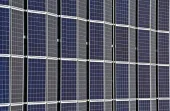



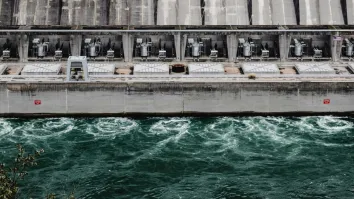
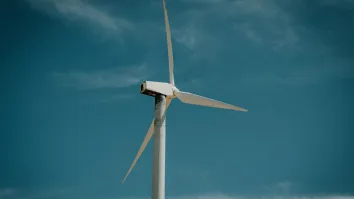
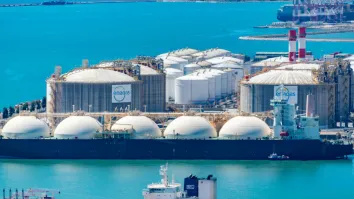












 Advertise
Advertise







